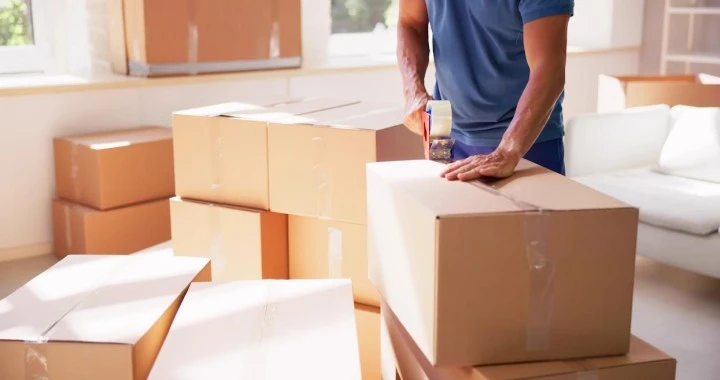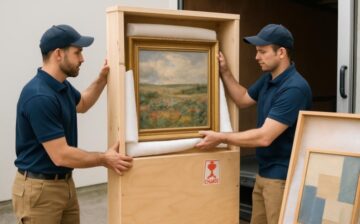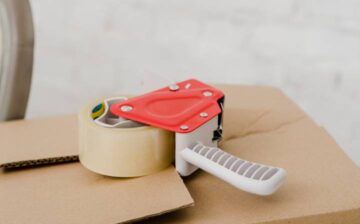
Moving is stressful no matter how many times you do it. There are so many little details to consider that it can get overwhelming. But thinking about it, what most of you are concerned about is keeping your belongings from damage, particularly your most precious belongings. You know, like your grandma’s antique vase or the glass souvenir from your honeymoon. Essentially, anything you couldn’t bear to see broken or damaged along the way.
Innovative Packing and Moving Strategies
As per the stats, a whopping 55.60% of movers find packing, especially when it comes to delicate items, to be the trickiest aspect of the whole moving process. And when your mind goes to the worst-case scenarios of treasured mementos smashed to bits inside poorly packed boxes, who can blame you for freaking out a bit?
But the good news is with the right game plan, materials, and some strategic packing techniques, you can outsmart potential perils during your move. So, keep reading to explore some insider tips and innovative solutions to keep those precious, fragile keepsakes snug as a bug through every twist and turn along the bumpy, moving road.
-
Carefully evaluate and categorize fragile items
Before you start packing, thoroughly assess all your breakable belongings and divide them into categories based on material type, size, weight, and fragility level. This allows you to tailor your packing methods and materials to each item’s specific needs.
For example, lightweight items like glassware or vases have different requirements than a heavy marble tabletop. Glassware, dishware, and vases can benefit from timber packing cases as they provide full enclosure and have load-bearing versatility. Meanwhile, when you pack a marble tabletop for a move, you’ll need to wrap it individually in bubble wrap and contain it in its original box when it was bought.
Ultimately, carefully evaluating and categorizing your fragile items allows you to plan and ensure that they are packed according to their specific needs and dimensions. Plus, this will also help you verify that nothing gets lost or broken during the move.

-
Invest in premium, high-quality packing materials
It can be tempting to grab those cheap boxes and rolls of bubble wrap when you’re staring down a mountain of stuff to pack. Moving is expensive, and you may want to cut some costs as much as possible, starting by buying cheap packing materials. Unfortunately, investing in bargain packing may later result in flimsy boxes busting open and bubble wraps randomly tearing into shreds, leaving your precious cargo vulnerable.
Invest in premium, high-quality packing materials designed specifically for fragile goods. Go for strong yet lightweight boxes that won’t easily collapse under heavier stacks and thick bubble wrap and foam sheets that provide a thick cushion. Remember, those few extra bucks spent on high-quality packing materials are just pennies compared to replacing damaged heirlooms and electronics.
-
Wrap every item individually
Tossing all your fragile items in one box together can be dangerous for your items. Those delicate and pointy edges can meet in all the wrong ways and jostle together during the moving adventure. Take your time to wrap up every fragile figurine and intricate statue individually with their own bubble wraps. If you’re packing a TV and other appliances, wrap them individually using their original boxes and thick bubble wraps.
To make it easier, you can designate a “bubble wrap station” wherein you or a family member is assigned to wrap all the fragile items in bubble wrap before moving them to the “packing or boxing station.” Before you know it, you’ll already have a mountain of individually wrapped, fragile items ready to nestle securely together in your boxes. Then, it’s just a matter of filling any gaps with newspaper or padding to keep things cozy.
-
Organize and layer items inside boxes strategically
Packing your fragile items inside the box is almost like playing the game of Tetris – the goal is to create a solid structure inside those boxes so nothing can slide or shift around. Start by lining boxes with soft goods like clothes or towels to create cozy nests. Then, load heavier items on the bottom first to avoid the heavy items crashing down onto your lightweight and most fragile collection.
The lighter items, like small vases and figurines, should be piled at the top. Whenever possible, try standing fragile stuff vertically rather than stacking it horizontally – less chance of things toppling over.
Be sure to eliminate any empty spaces around goods, too. Wadded newspapers or air pouches make great void fillers to hold items in place. The tiniest bit of room allows shifting and bumping, which can lead to cracks and breakage over the miles. So, be generous with packing materials and create snug, super stable boxes.
-
Label clearly and keep fragiles separate
As everyone knows, moving is chaotic. You can expect many furniture pieces and boxes scattered everywhere, and movers will be hustling in and out to move your things. In the middle of this chaos, it’s easy for things to get lost in the shuffle. To protect your boxes containing fragile items, you should clearly label those boxes so they stand out.
Go for big, bold lettering of “Fragile – Handle with Care!” so everyone, especially the movers, will be aware that certain boxes contain breakable items. Also, separate “fragile only” loads from the non-fragile boxes if possible and limit the stacking of the delicate boxes.
-
Inspect packaging frequently during the move
Even when you’ve wrapped and packed your fragile goods with care beforehand, it’s still recommended to stay vigilant about monitoring your precious cargo in transit. Take a few minutes during pit stops to peek inside the fragile boxes and do some visual damage checks. Make sure boxes are securely stacked and strapped down in the truck so they don’t tip and spill everywhere.
Gently reshuffle goods that may have shifted so fragile stuff again sits snugly immobilized. If you spot dents or cracks forming, take time to rewrap and add more padding before loading items again.
On a separate note, keep an eagle eye on your hired movers, too. This may slow them down, but if you catch them roughly loading your boxes marked with “fragile,” speak up as soon as possible. It’s better to gently remind them about handling things with care than discovering irreplaceable heirlooms that have conveniently “shattered” during transport.
Wrap Up
There you go! With a little strategic planning and TLC when prepping and transporting those delicate items, you can outsmart potential mishaps on moving day. Remember, safeguarding fragile goods when relocating requires diligent preparation, high-quality packing materials, strategic item wrapping and box loading, vigilant monitoring enroute, and extra care when transporting delicate items. Take these extra steps. That way, when you unpack at your new place, it’s all smiles over how well precious items held up – not tears over damage!
We hope you found this blog post on Innovative Packing And Moving Strategies For Fragile Items, useful. Be sure to check out our post on Tips to Moving With Delicate Items for more great tips!
Have Experience in the Moving Industry? Want an Additional Income Stream? Work With All Around Moving!
Earn a commission with all the moving jobs you book with us. Partner with us and we’ll help you profit. Profit as a moving consultant. Click here to learn more.





